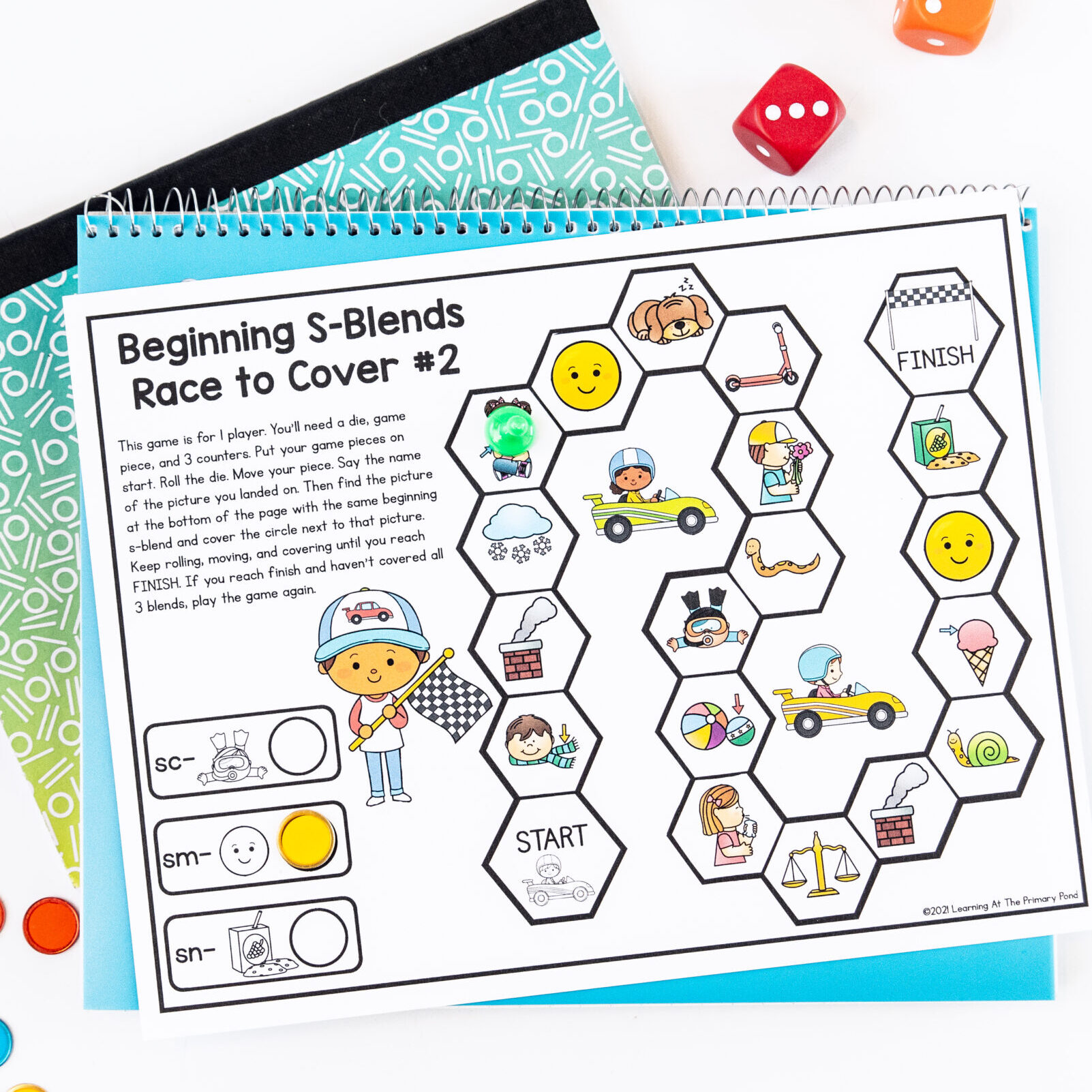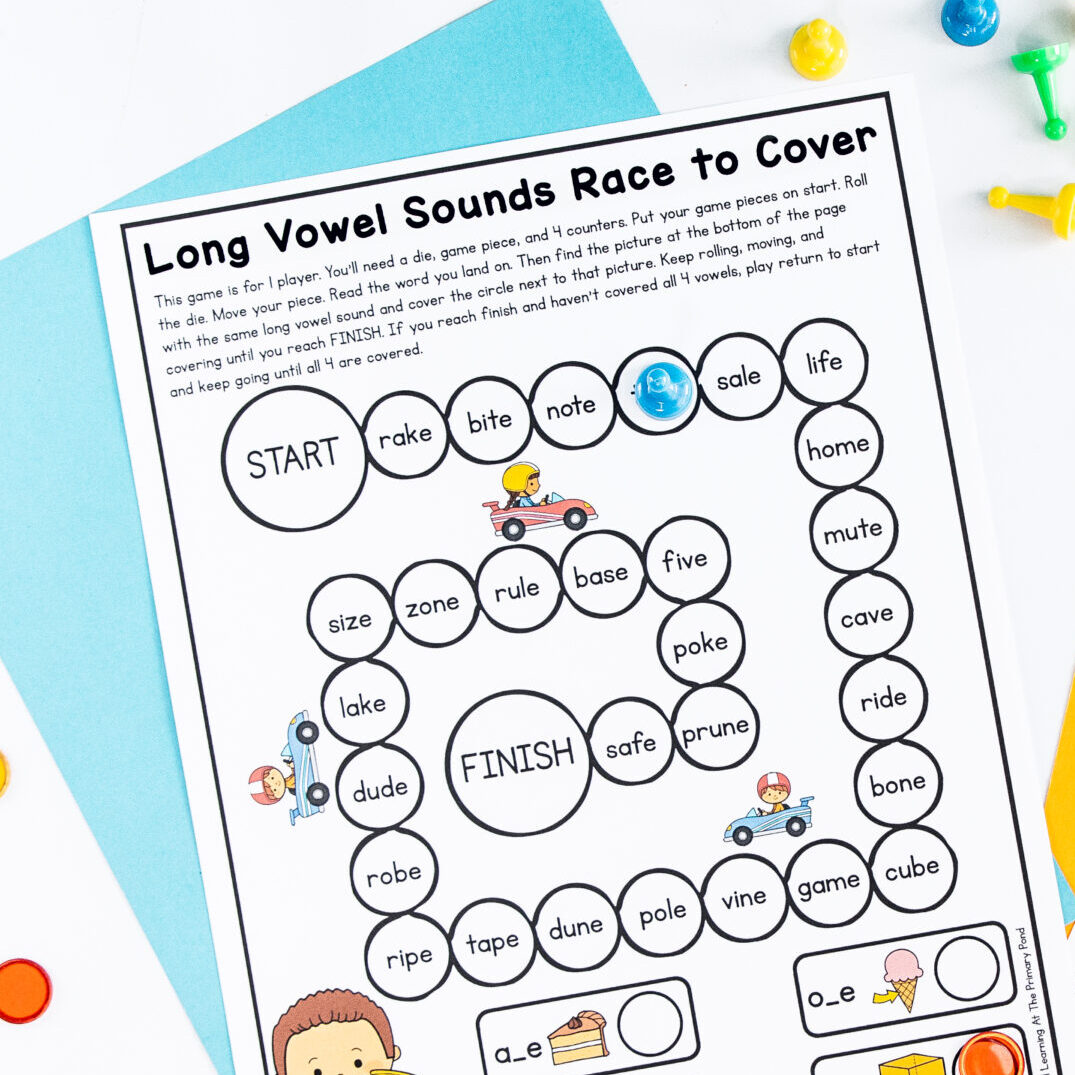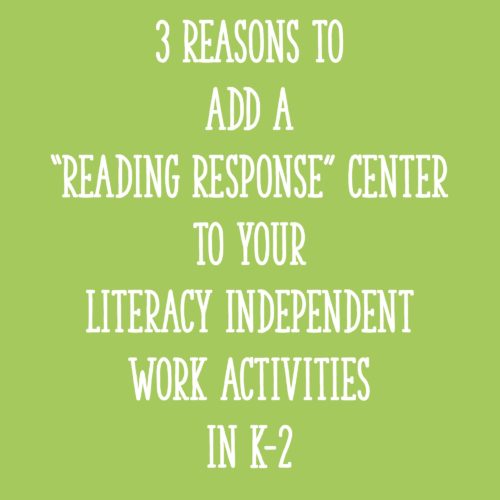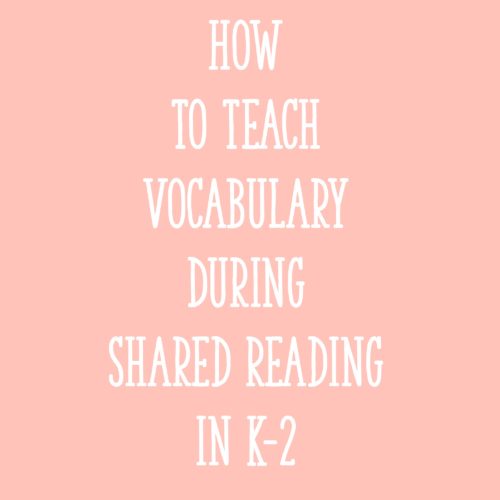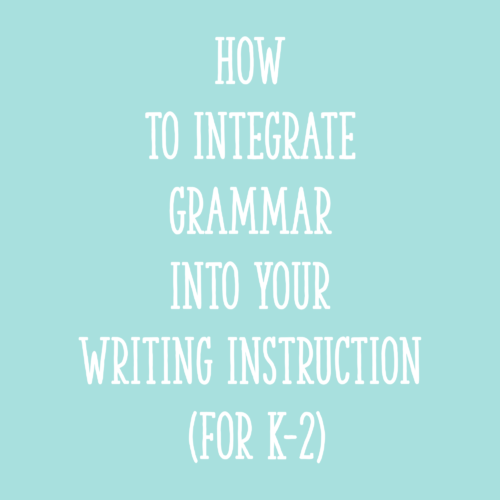I can’t recall a time I’ve worked with a class, or another teacher, that didn’t have a wide range of levels when it comes to phonics and reading! Most likely, if you teach first grade, for example, you have students ranging from Kindergarten (or even pre-Kindergarten) levels, all the way through 2nd grade and above. What this means is that if you only teach “grade level skills,” you’ll be missing out on addressing many students’ needs.
At the same time, meeting a range of needs in phonics and reading can also be super daunting and overwhelming. On top of needing to prep and plan for your own grade level content, now you realize that you have to find materials for below and above grade level too! That’s why, in this blog post, I’ll give you some tips on what to do with a wide range of levels in your class.
Use An Assessment
We know that kids are going to start the year with a range of needs. But before you tackle what to do to meet those needs, it’s important to know exactly what those needs are.
Having an assessment that’s easy to use AND provides easy-to-understand data is key. A phonics diagnostic, or assessment, is used to “diagnose” or identify the strengths and areas of growth for students in your classroom.
The assessment should help you determine exactly what phonics patterns students can decode (read) and encode (spell). Then, based on each student’s results, you can identify skills students already know as well as gaps in their phonics knowledge.
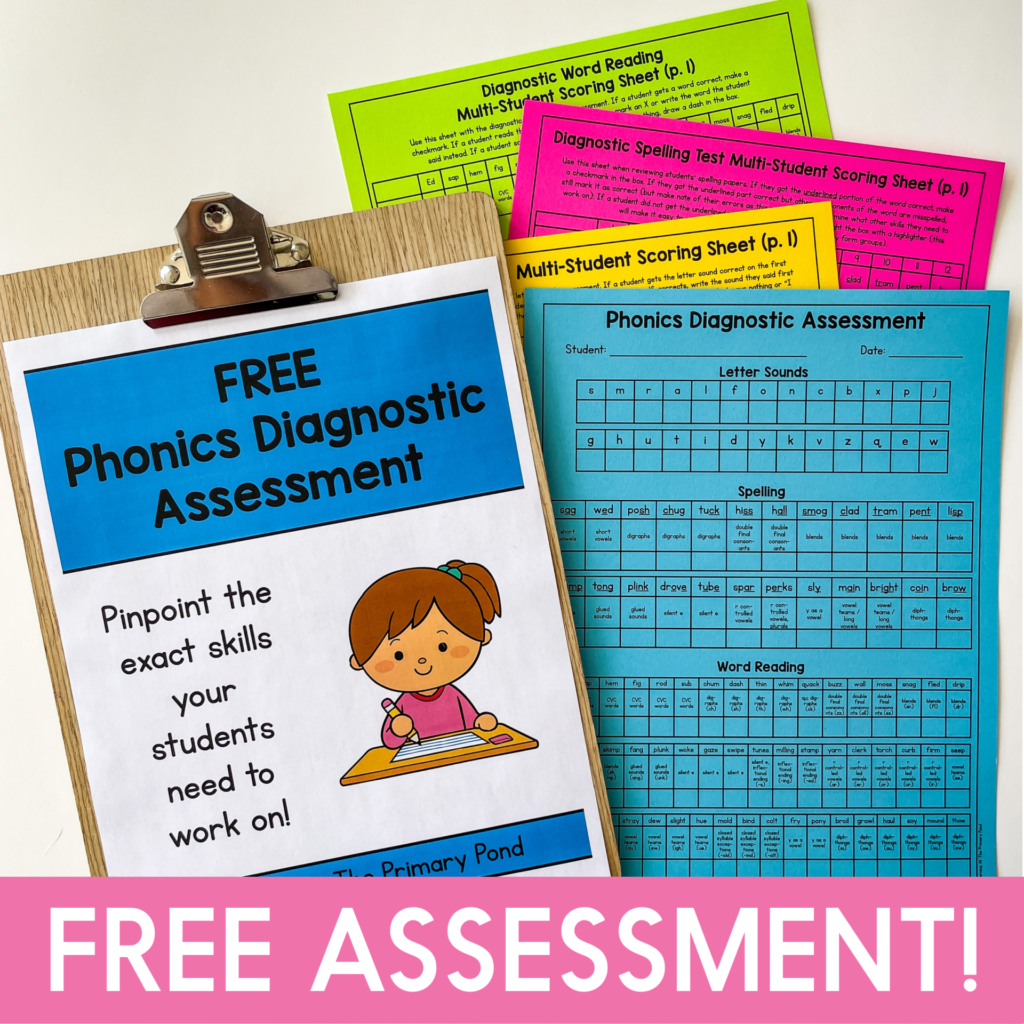
In this free phonics assessment (best for K-3), there are 3 components:
- Letter-Sounds Diagnostic – In this portion, students are asked to produce the sounds that each of the 26 letters makes. (You can skip this if students are already reading.)
- Diagnostic Spelling Test – Students will be asked to spell words that contain each of the skills listed below.
- Diagnostic Word Reading Assessment – Students will be asked to read words that contain each of the skills below.
Here are the skills included in the reading/spelling assessment:
- VC words
- CVC words
- Digraphs
- Consonant blends
- Double final consonants
- Glued sounds
- Silent e words
- R-controlled vowels
- Inflectional endings
- Vowel teams
- Closed syllable exceptions
- Y as a vowel
- Diphthongs
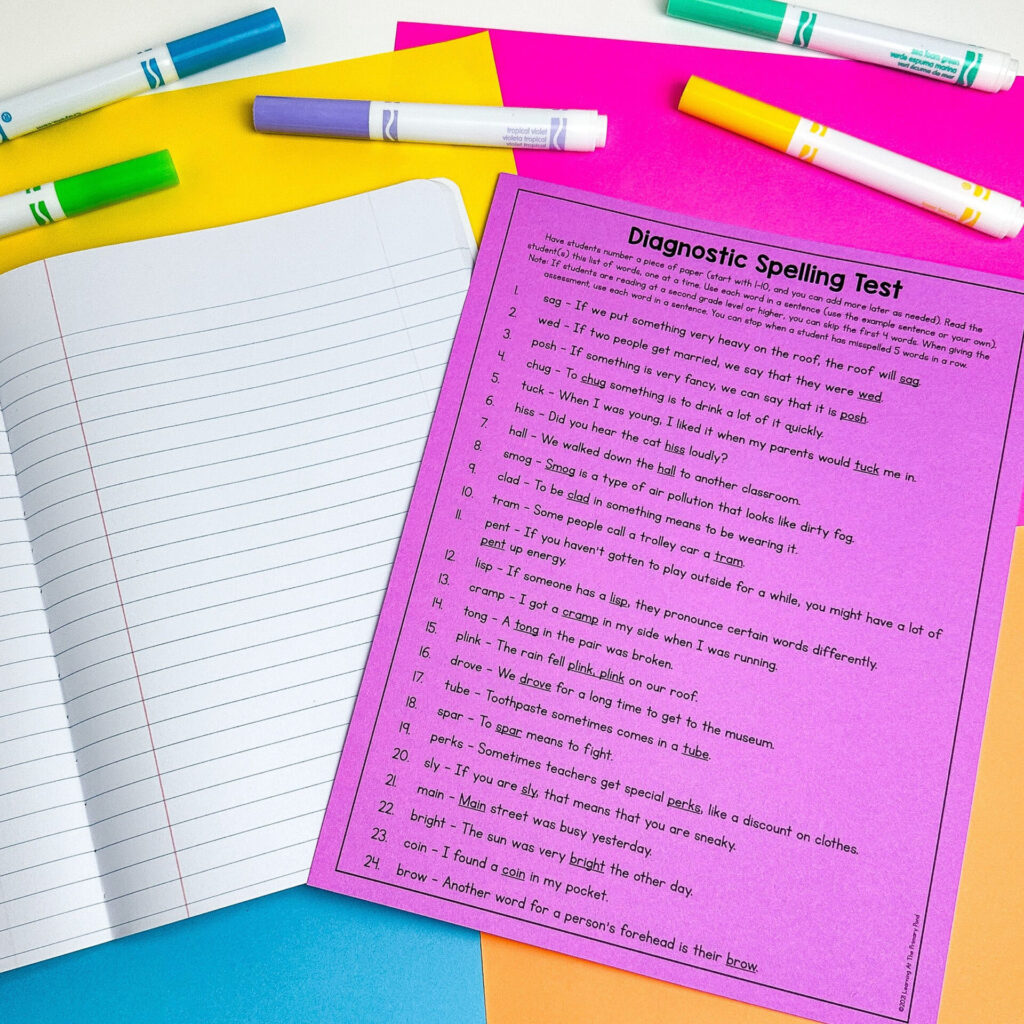
You’ve Completed The Diagnostic – Now What?
After completing the phonics assessment with your student(s), you’ll have lots of information at your fingertips! You’ll see things that students were able to do, as well as skills that students aren’t familiar with. You’ll also want the information to be transferred into clear, actionable steps.
We can look at this data through a waterfall analogy. Start big picture, trickle down to group trends, and then end with individual takeaways.

Here’s a list of questions you should ask yourself (and write down answers to) when reflecting on the data:
- What are some strengths our class has as a whole? (at least 2/3 of the class was able to do)
- What are some areas of growth our class has as a whole (at least 2/3 of the class wasn’t able to do)
- Are there certain skills that a group of students is really advanced in? (i.e. 5 Kindergarten students were able to spell words with digraphs)
- Are there certain skills that a group of students had trouble with? (i.e. 6 1st grade students weren’t able to decode CVC words)
- Are there individual students who are advanced in particular skills? (i.e. one 2nd grade student could read and spell words with diphthongs)
- Are there individual students who are fairly behind in certain areas? (i.e. one 1st grade student who can only identify 10/26 letter sounds)
Answers to these questions will help you determine how much phonics instruction you should do in whole group, small group, and 1:1.
If a majority of your class is at (more or less) the same starting point, you’ll be able to do a lot of your phonics instruction whole group. This will help maximize the instructional time your students are getting to cover the same skills.
However, if your class has a pretty wide variety of skill levels, you’ll most likely want to be doing most of (but not necessarily all of) your phonics instruction in a small group setting. This will allow you to tailor each small group lesson around a different skill that matches the ability level of the group.
If you’re seeing some individual outliers (high and low), you’ll want to make notes of how you can incorporate this one-on-one instruction throughout the day/week. Maybe you can provide differentiated materials to this student during phonics time. If you have an aide, they can pull the student to work on specific skills.
Materials for Differentiation
One way to manage a wide range of levels is to give the same activity to students but provide different difficulty levels of the activity to different groups of students. This way, you’re only explaining the activity once to the entire class, yet the skill can change. Here are a few examples:
Blending Lines
These blending lines are great for helping students apply phonics skills and increase their reading fluency. The nice part about them is that once you teach students how to use this resource, they can do it independently! Here’s what the CVC set looks like:
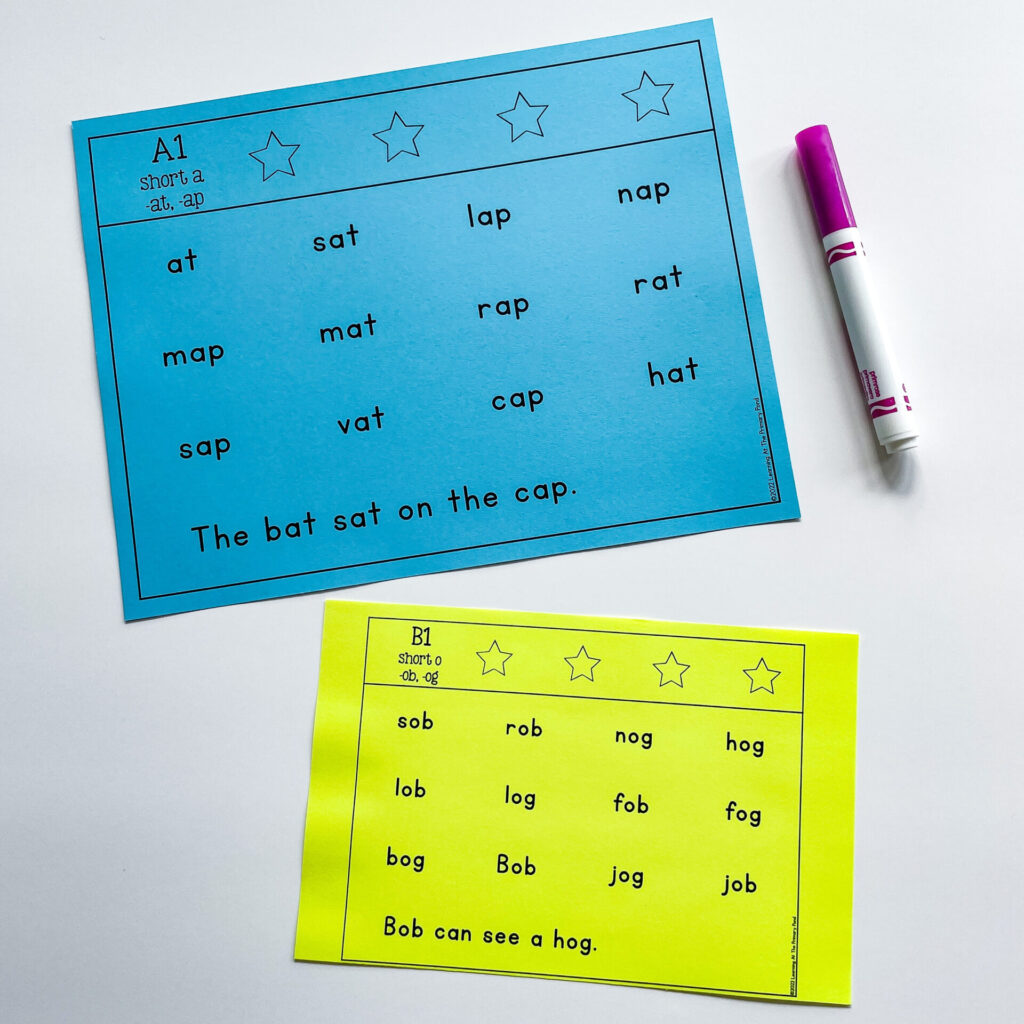
Here’s the exact same resource, but with more difficult patterns – diphthongs, r-controlled vowels, and vowel teams.

No-Prep Phonics Games
With these no-prep phonics games, you can have all of your students playing fun, engaging games – and you can easily differentiate!
In these “Race to Cover” games, the same format is used so you can explain the game to all students. Yet, there are different skills used in variations of the game, so you can have students of wide ranges playing the same game!
Decodable Texts
Decodable texts provide opportunities to practice phonics skills within the context of text! Make differentiation easy on yourself by using decodables with various patterns!
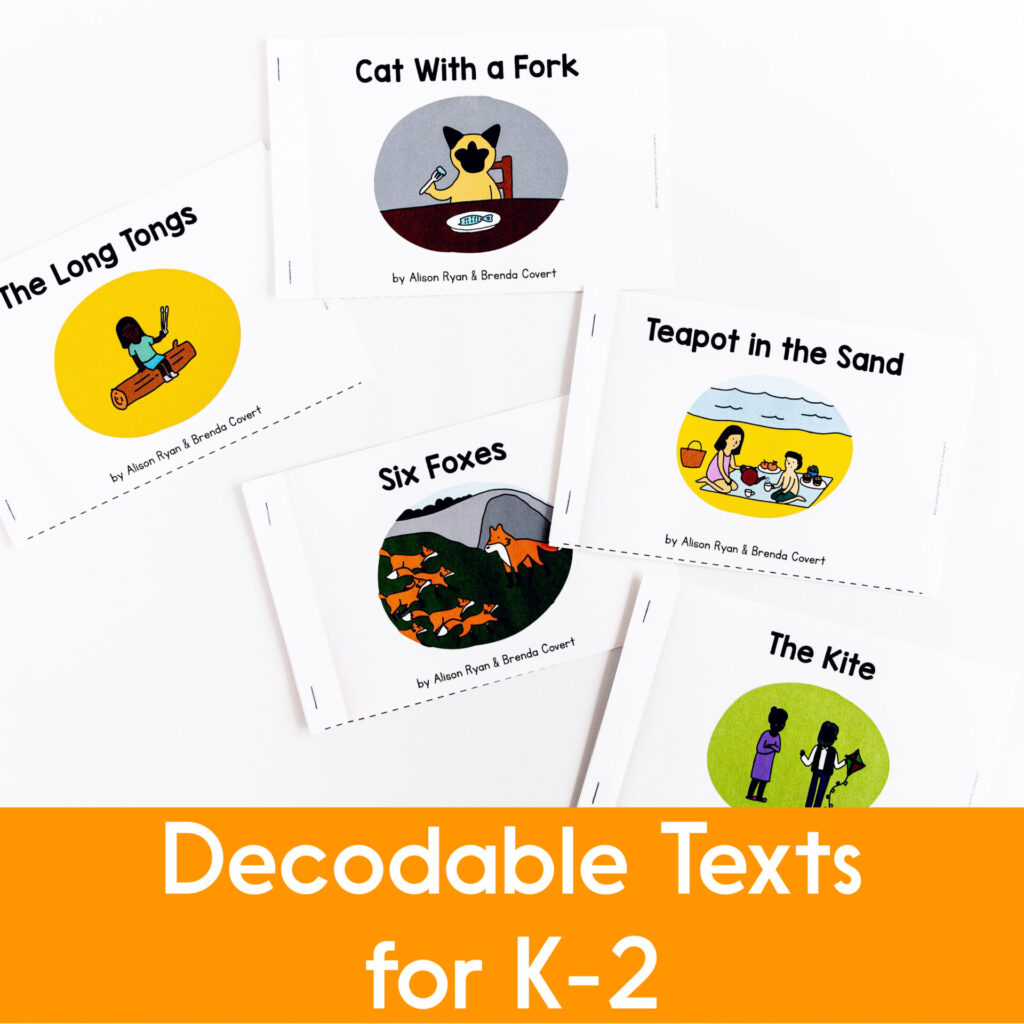
I also have seasonal and holiday decodables. Many of them cover the same topic, but with different skills so you can meet the needs of a wide range of students.

Conclusion
Using an assessment and then having differentiated materials will help you support a wide range of phonics and reading levels in your classroom.
If you’re interested in checking out my FREE phonics diagnostic assessment, click here to get access!
Want to save this post for later? Pin the image below to one of your Pinterest boards!
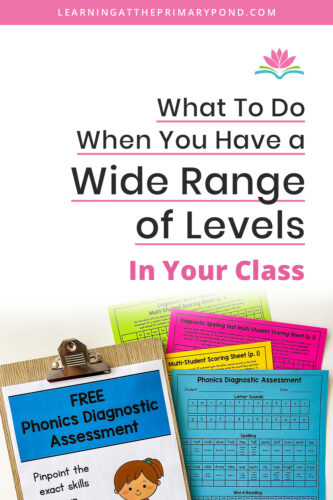
Happy teaching!

